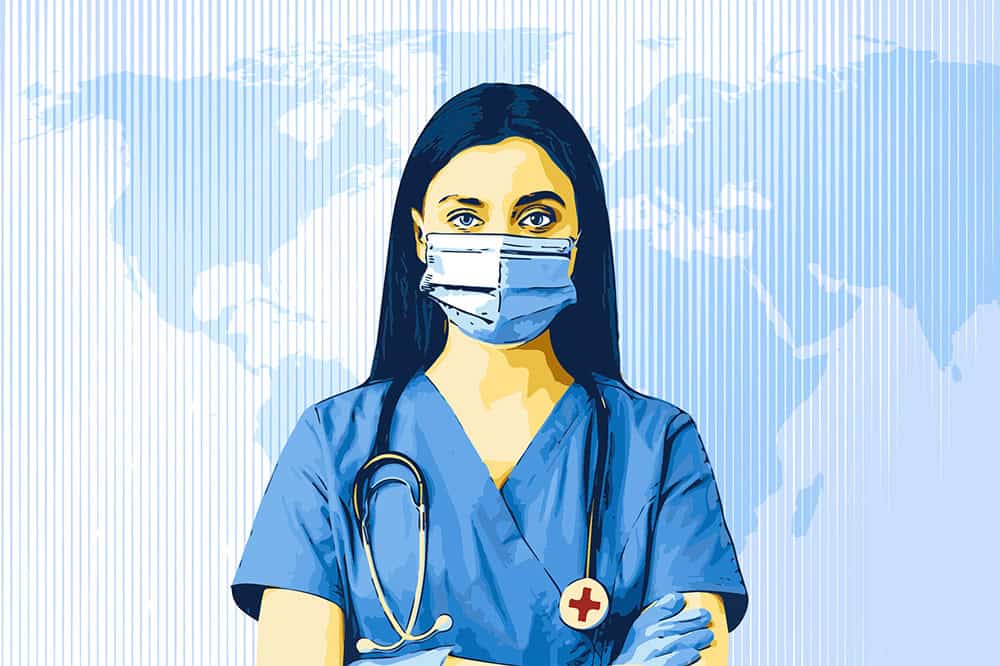What Has the Coronavirus Taught Us about Our Healthcare System and Preparedness?
Last Updated August 31, 2020
In the latest installment of the Peter G. Peterson Foundation’s Economic Forum series, Dr. Michelle Williams, dean of the faculty at the Harvard T.H. Chan School of Public Health, and Dr. Harvey Fineberg, president of the Gordon and Betty Moore Foundation, identified ways to help address critical shortcomings through investments, technology, and public-private partnerships.
Williams said that the coronavirus pandemic has increased awareness on the importance of public health, which is central to every aspect of society from economic security to national security. She and Fineberg said this crisis reveals the need and opportunity for greater investment.
“We have an opportunity to work across all sectors — the private sector, the public sector, the academic sector and the philanthropic non-government organization community — to think about the approaches we have to take to reinvest in building a more equitable and just society,” Williams said. “I also see the positive of increasing recognition of just how important it is to invest and support a social safety net that has over decades become quite threadbare, and by that I mean investment in interconnected services and social platforms that enable quality housing, quality education, the awareness that we do have to pay attention to place-based interventions that holistically address barriers to economic development, educational and employment opportunities in communities that have been left aside.”
In fact, federal investment has sharply declined over the past 50 years and that includes areas that affect public health and economic opportunity, such as scientific and environmental R&D, education, and infrastructure. Meanwhile, the federal government is now spending over $1 billion per day in interest on the national debt.
To help improve access to healthcare for disadvantaged communities, Williams called for solutions that simultaneously expand telemedicine and broadband access.
“If we push forward a telehealth solution without also understanding that there are communities that don’t have access to broadband technologies, then it will accentuate disparities,” she said. “We really do have to think about what are the structural, social, political, environmental barriers that might attenuate the access to these new tools, new capabilities, and one of them really is historical lack of investment in some of our infrastructure across the rural parts of our country.”
Fineberg said that telehealth, video conferencing, and platforms for remote collaboration could also improve efficiency, effectiveness, and quality of life.
“If we make the kind of investments that Michelle is talking about, then we have opportunity to reduce a barrier that would otherwise stand between the access of individuals to high-quality care,” he said. “In the same way that President Eisenhower invested in the infrastructure for our national highway system or rural electrification in the 1930s under President Roosevelt, these were the kinds of infrastructure investments that radically leveled a playing field, made accessible services and quality of life that were unattainable.”
In order to help overcome this crisis and improve health preparedness, Fineberg and Williams emphasized the importance of a national plan that empowers scientists to take a leadership role and also ensures an adequate stockpile of medical equipment, testing, and immunization capabilities are readily available across the country.
“It will be important to reckon with past, structural barriers to equitable healthcare delivery during a time of COVID, when we are already confronting vaccine hesitancy,” Williams said. “We have to address the mistrust and the misinformation problems that exist.”
Image credit: Getty Images
Further Reading
Infographic: U.S. Healthcare Spending
Improving our healthcare system to deliver better quality care at lower cost is critically important to our nation’s long-term economic and fiscal well-being.
Three Key Things to Know about CHIP
The Children’s Health Insurance Program is a key piece of the social safety net. Let’s take a look at what CHIP is, how it is financed, and who benefits from it.
Quiz: How Much Do You Know About Healthcare in the United States?
The United States has one of the largest and most complex healthcare systems in the world. Take our healthcare quiz to see how much you know about the cost and quality of the U.S. healthcare system.


